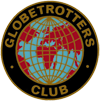Day 1. Depart Europe via Frankfurt, Lufthansa flights are cheapest, then
overnight flight to Seoul.
Day 2. Land around noon at Incheon Airport. Take the Airport limousine
bus into downtown Seoul, about 90 mins. After checking in to your chosen
accommodation, Yeogwans are good value simple accommodation go for a walk
to help ward off the inevitable jetlag.
Day 3. To get a first impression of Seoul you can take a city tourist
bus that goes around the city, stopping atthe major sights and areas.
A day pass costs 5000 Won ( US$ 6 ). In the afternoon go to Namsen Park
and ascend the Seoul tower for a birds-eye view of the city and to help
get your bearings.
If you are not too tired in the evening go to Itaewan district, for the
nightclubs, bars and markets.
Day 4.Today you could start the day with a pleasure boat ride up the
Hangang river that bisects Seoul, then spend the afternoon exploring the
Gyeongbokgung Palace. The Palace is made up of dozens of buildings and
museums. If the weather is unkind Seoul has many museums including a Rail
Museum, a Folk Museum and even a Currency museum, hope to see the Euro
in there soon!
Day 5. A day to escape the city, especially if it’s a Tuesday when a
lot of the museums and public buildings are closed. Take an organised
trip 60 Km north to Panmunjon on the DMZ, Demilitarised Zone. This is
an area where the cold war continues. UN soldiers guard this border between
the two Korea’s. You cannot go to this area except in an organised group,
and you have to sign a disclaimer in case you get shot! The tour takes
in the Freedom bridge and third Tunnel. You visit camp Boniface and are
on the borderline between the two countries. An exciting and different
side trip.
Day 6. Time to leave Seoul. Take a bus from the Seoul Express Bus station
and head south for four hours to Gyeongju in the Southeast. Gyeongju is
an historic city containing the best-preserved relics from the Silla dynasty.
This afternoon visit the Stone Silla Cheomseongdae observatory, one of
the world’s oldest and Anapji pond in town or take a taxi and visit the
standing stone buddhas, or the Abalone shaped watercourse south of town.
Day 7. Today take the 40 minute bus ride to Bulguksa temple that lies
east of Gyeongju at the foot of Mount Tohamsen. It is one of South Korea’s
premier tourist attractions, so get there early to avoid the heat and
the crowds. It is listed as a world heritage sight and is Korea’s oldest
Buddhist temple, the complex is made up of over 60 buildings. Contained
within are numerous treasures from the Silla era.
Day 8. Another short trip today, as we take the bus to Gimhe airport
in Busan ( Aka Pusan). The flight to Chejudo Island will take only 50
minutes ( US$ 50). You can alternatively take a ferry from Busan to Cheju
that takes 11 hours overnight, often through rough seas. The difference
in cost amounts to only a few dollars so the flight is preferable. Mid
afternoon arrival in Jeju. Take a walk to the Mysteriously shaped Dragon
Head rock on the edge of town, or go to the Moksukwon road and see the
optical illusion of cars rolling uphill.
Day 9. Take the bus to the Manjang cave area on the east of the island
and explore the world’s longest volcanic lava tubes. Take the bus to Songsun
Peak, so called Sun rise peak. If you want to be there as the sun rises,
then you need to spend the previous evening in the nearby village. Walk
along the beach and if you are lucky you may come across the “Sea
women”. These ladies dive for pearls without the use of air tanks
and are able to hold their breath for two minutes.
Day 10 Early bus to Sankumburi crater, famed for it’s diverse flora.
Then head south to Sogwipo city, the islands second city, and a venue
for this years football World cup. To the west of the city take in Yakcheonsa
Temple, which is made completely of wood, then stroll the 400m to the
Jusanjolli rock formations.
Day 11 Depending on time and tides take the ferry to Mokpo on the mainland,
this trip takes 5 hours. It may be preferable to fly. You may have to
spend the night at Mokpo if the ferry is late.
Day 12 Train or bus to Jeonju, a popular town with temples and pagodas
in parks to the east of the city, including the so-called Two Horse head
Mountain, that has a picturesque Temple at the foot of the mountain.
Day 13. Train or bus back north to Seoul. Arrive early afternoon. Last
chance for souvenir shopping and wandering.
Day 14. Morning at leisure before transferring to Incheon airport for
the flight back to Europe. With the nine hour time difference, you land
the same day, but your body may not agree!
If you would like to contact Kevin, please e-mail him on: Kbrackley@yahoo.com
